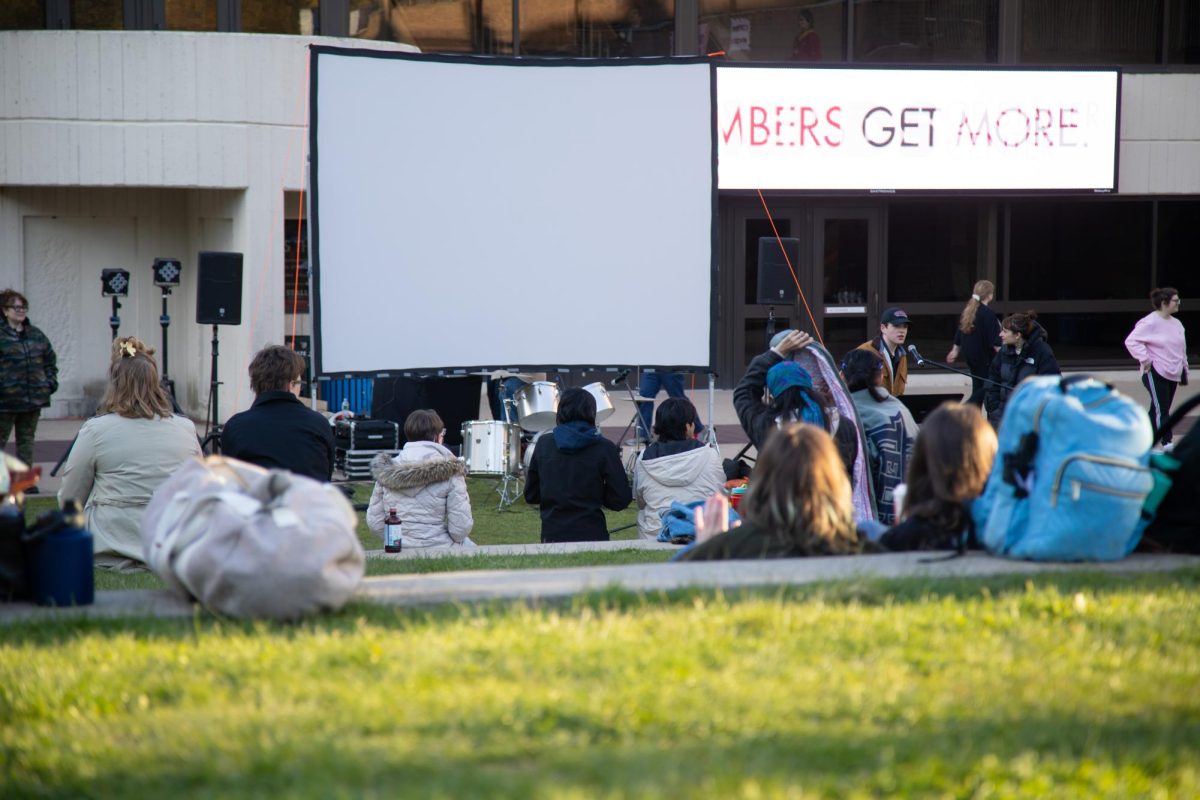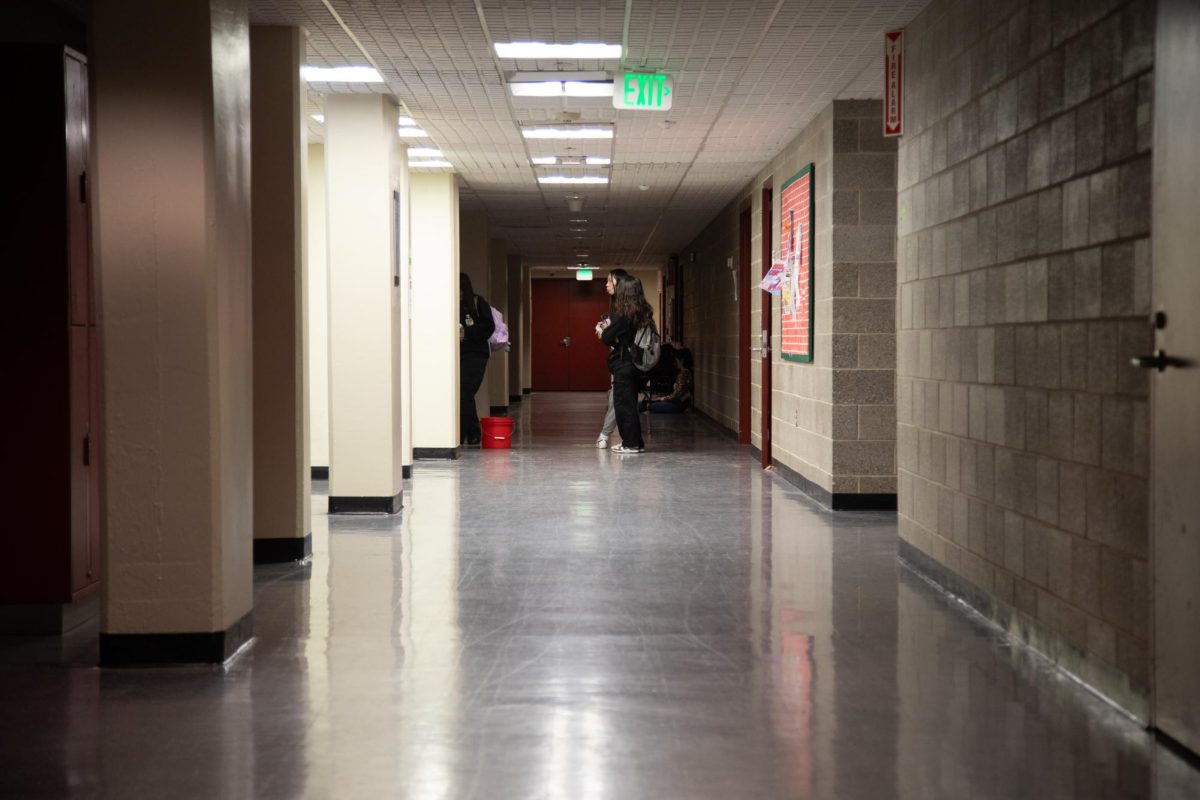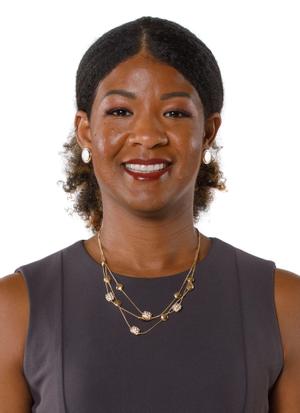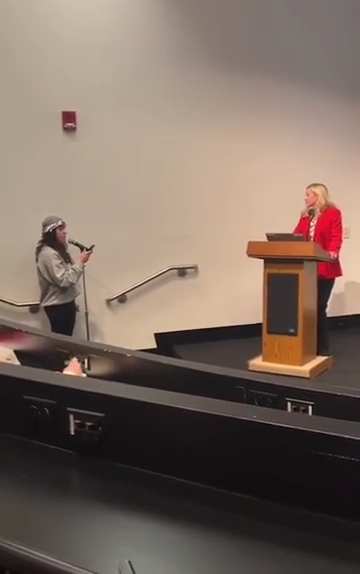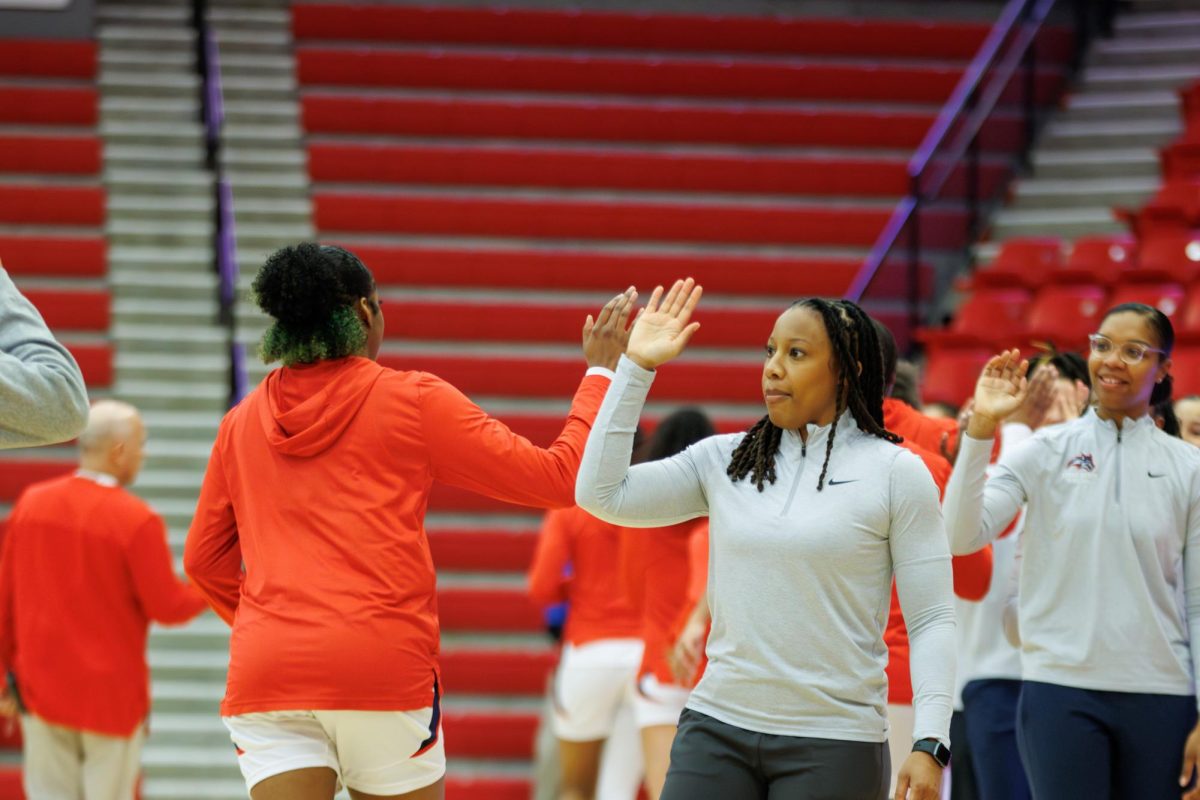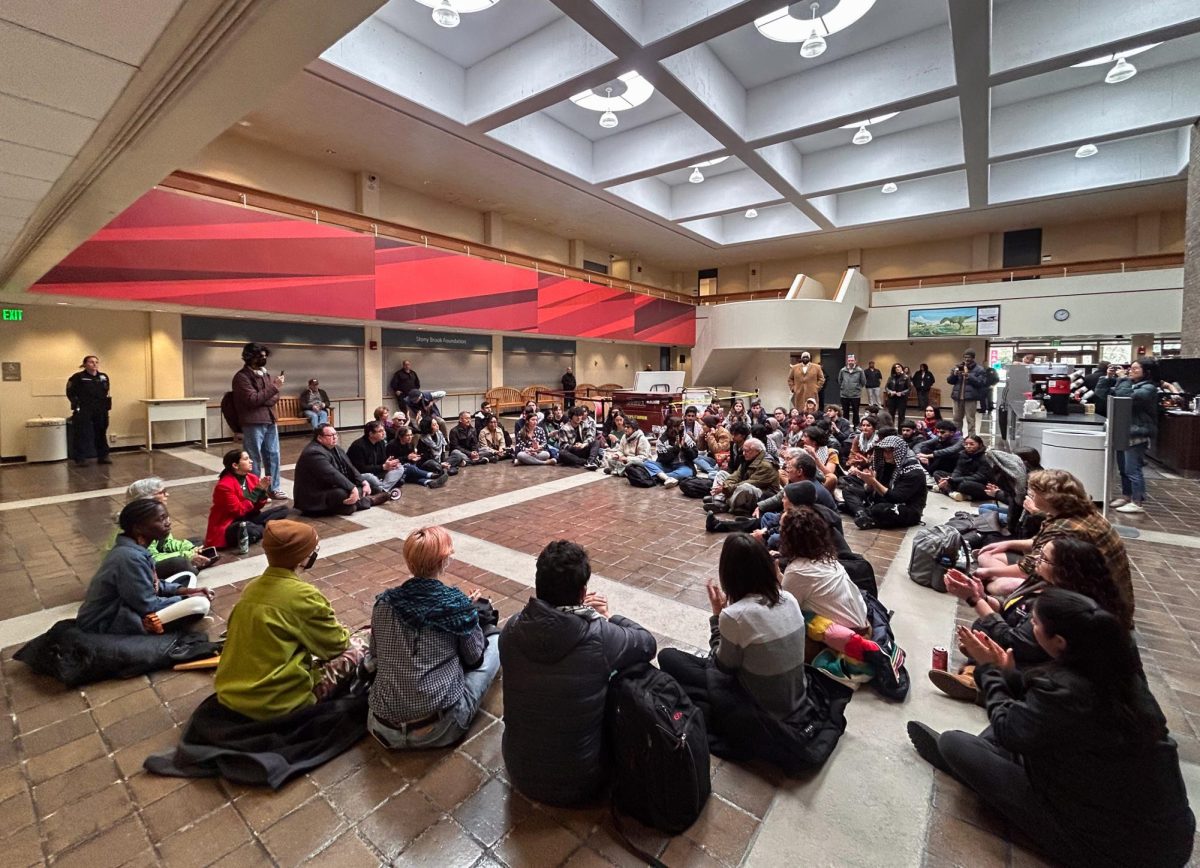
With just days remaining until opening night, the cast and crew that will perform the modern adaptation of Shakespeare’s Hamlet are busy playing out scenes before the curtain finally rises.
While they have been rehearsing since about the middle of February, the process for which it takes to put on the show has been going on since well before the start of the spring semester. Auditions took place before Thanksgiving in the fall and they have been looking over their scripts since winter break. All of this has prepared them for the core rehearsals they will go through this week leading up to show time.
Students in various roles face different unique challenges in order to make the show run correctly, and they have been facing these challenges on a daily basis each time they rehearse.
One of the biggest challenges for the actors is to convey the meaning of Shakespeare’s work to an audience who may not fully grasp the meaning of the story.
“Our job is to make it not boring,” said Katherine Gorham, a first year theatre arts major playing the role of H3, part of Hamlet’s subconscious. “It’s our job to convey it so they don’t have to sit there with a highlighter and a script.”
Another challenge the actors face for this production is performing in an arena setting.
Instead of facing the audience in one direction, the audience will be seated around them as they perform. The show’s theatre director, Valerie Pye, an adjunct in the Theatre Department, sat throughout Theatre One in the Staller Center observing from the different positions the audience will be seated in.
“That was a big challenge because normally in western theatre you perform in front of stadium stages where you have a big arch and the audience is on one side of you,” Gorham said, “It’s surprisingly challenging.”
Senior theatre arts major Jenifer Pritchard is the show’s master electrician. She does her work during the day, and part of her role is to teach newer students the basics of her job, which includes connecting cables and hanging lights from the scaffolds. Her primary focus however, is to facilitate an environment that ensures that all the crew and staff perform at their peak.
“My number one goal is to make sure that all the actors are safe on stage, considering all the stuff that’s hanging above them,” Pritchard said.
Junior theatre arts major Aaron Ryan, the play’s stage manager, is responsible for helping oversee all the actors, designers and stage help. If anyone has any problems or needs any help during the course of rehearsal, Aaron is their main contact.
“As stage manager I basically manage the actors during rehearsal, and outside rehearsal I am the communication between the directors and all the designers as they prepare for the upcoming performance,” Ryan said.
“Once all the rehearsals are done and the director steps out of the way it then becomes my responsibility to make sure things run smoothly, so once those are over I’ll be calling all the cues that make the show run.”
This is Ryan’s first time working as a stage manager. As the rehearsals have progressed one of the challenges he has faced is the addition of new elements throughout the process.
Some of these encounters include the use of new props, learning the positions actors have during the show, and simultaneously keeping track of elements such as lighting.
At a recent rehearsal, Ryan took note with a pen and pad the various positions all the actors will be in during the famous “To be, or not to be” scene.
All of the work is overseen by Pye. She adapted the play for production herself back in the fall.
“My goal was to remain true to the story but at the same time not have a four hour production,” Pye said.
She envisioned what she hopes the culmination of their hard work will be when it finally comes time to perform.
“Especially working with Shakespeare, to see it come to life hopefully in a way that is relevant to an audience, and hopefully in a way where you can see the audience’s appreciation of that, it is very rewarding,” Pye said.


